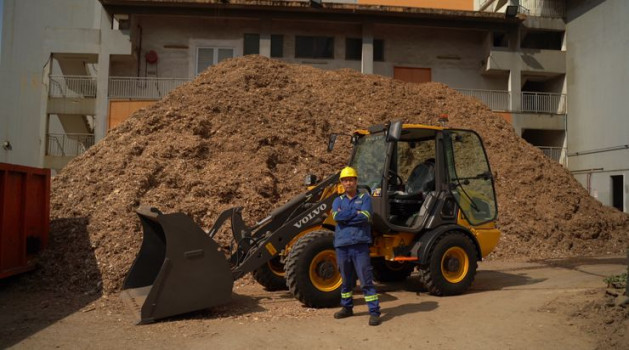Handling COVID-19 in Asia: Building, Converting, Facilitating & Managing Spaces




The original article is written by Anisa Pinatih and published in Construction+ Online
Around the world countries are grappling with the COVID-19 outbreak, and in Asia, local governments have put measures in place to curb the spread. Hong Kong was impacted early on and issued a quarantine order on 8 February 2020. Singapore was quick in detecting and responding to the cases and has been thorough in regulating its spatial use since then. Malaysia has issued a Movement Control Order since March 2020. Indonesia has recently followed suit with its Government Regulation Number 21 Year 2020 about Large-Scale Social Distancing to regulate localised movement.
In the construction industry, the focus of most news has been the building of emergency facilities and impact on workers and projects. This article looks at governmental measures in Asia that are related to building and construction in a broader sense, including not only the construction of facilities, but also converting and managing spaces.
BUILDING EMERGENCY FACILITIES
In Indonesia, the government provided the need for an emergency COVID-19 hospital by converting Kemayoran Athletes Village. They also built a hospital in Pulau Galang, Batam, Riau islands by using modular technology. The use prefabricated construction method has resulted in improved product quality and faster construction time (Modular Division Manager of Wika Gedung, Indonesia). The hospital was built on a former refugee campsite—consisting of staff dormitory, necessary facilities, and a ward with isolation beds. The construction took around a month—started on 11 March 2020 and was completed and opened on 6 April 2020.
In the Philippines, the Emergency Quarantine Facilities were built even faster—in just five days. The time efficiency was due to the simple structure and the availability of materials. These isolation tents are built to increase hospitals’ capacity so that they are able to treat more COVID-19 cases.
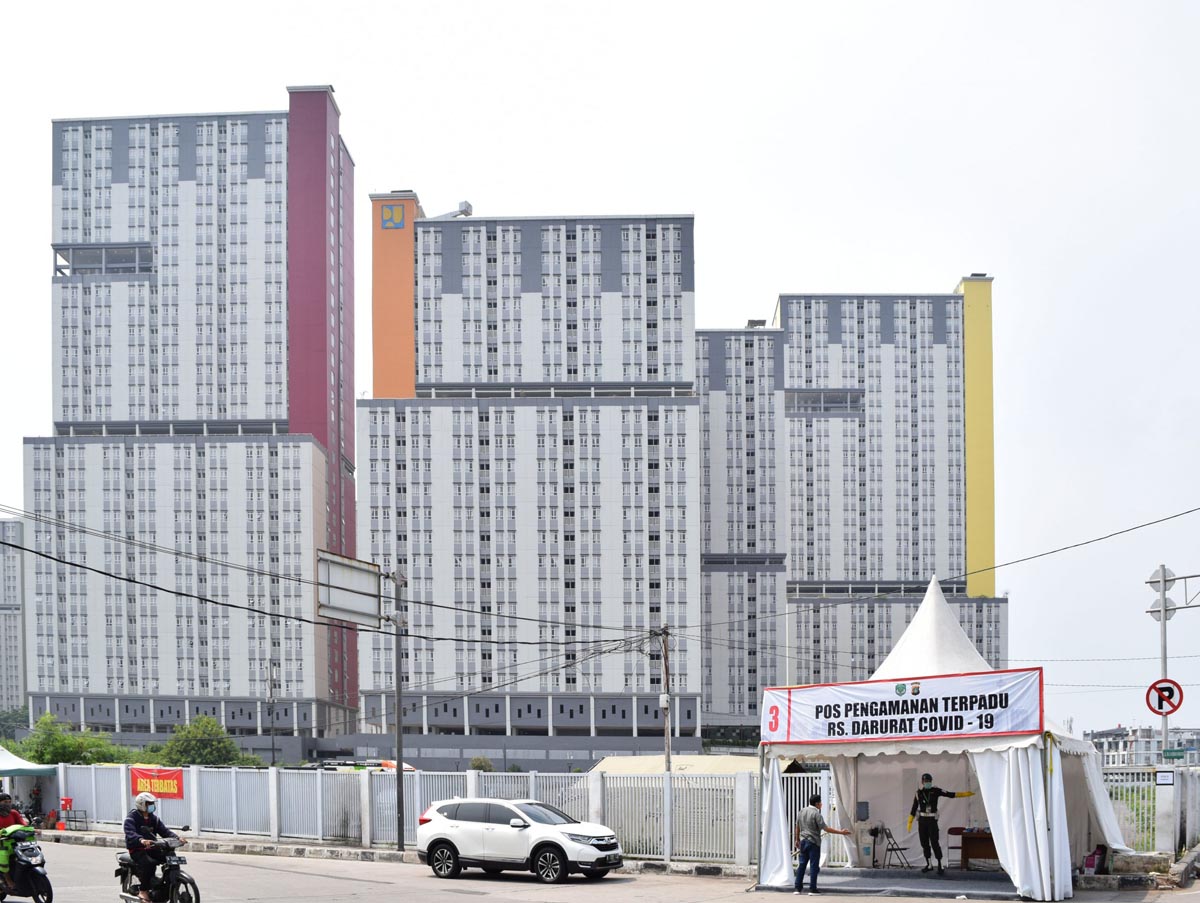
The Indonesian government converted the Kemayoran Athletes Village into an emergency hospital to treat COVID-19 cases. ©Notara WG/Shutterstock
CONVERTING & REUSING SPACES
In Hong Kong, with such a dense population and limited space, meeting the needs for quarantine facilities could be a challenge. To overcome this, Hong Kong SAR government is converting recreational facilities—such as Tso Kung Tam Outdoor Recreation Centre, Sai Kung Outdoor Recreation Centre and Lady MacLehose Holiday Village, Lei Yue Mun Park and Holiday Village—into quarantine centres.
What can be learnt from Hong Kong is that the conversion of these facilities have to go through robust assessments by the government. First, it will consider whether the facilities meet stringent requirements for a quarantine centre including location; overall facilities and infrastructure; environment; possible impact to the residents nearby; and the time required for its operation.
When a decision is made, there will be a meeting with the residents in the neighbourhood to explain the relevant use, and a briefing about the arrangement with the district council. This is conducted by representatives from the Food and Health Bureau, the Department of Health, and the Housing Department to ensure that the centre will be effective and non-disruptive.
SETTING FACILITIES’ STANDARDS
Treating COVID-19 cases requires supporting facilities and equipment. For hospitals, these can easily be met; but for converted facilities, a standard must be set. The Ministry of Health of Malaysia has issued Guidelines for COVID-19 Management No.5/2020 (updated on 24 March 2020) about criteria of premises for quarantine stations, applicable to both hospitals and gazetted non-hospital facilities.
The facility must have singles room with good ventilation and en-suite bathroom and toilet, preferably for all cases but compulsory for all suspected cases. If shared room is unavoidable, the distance between each bed must be at least 1 metre apart. There must be a separate room for keeping medication, consumable items, linen; as well as for clinical examination.
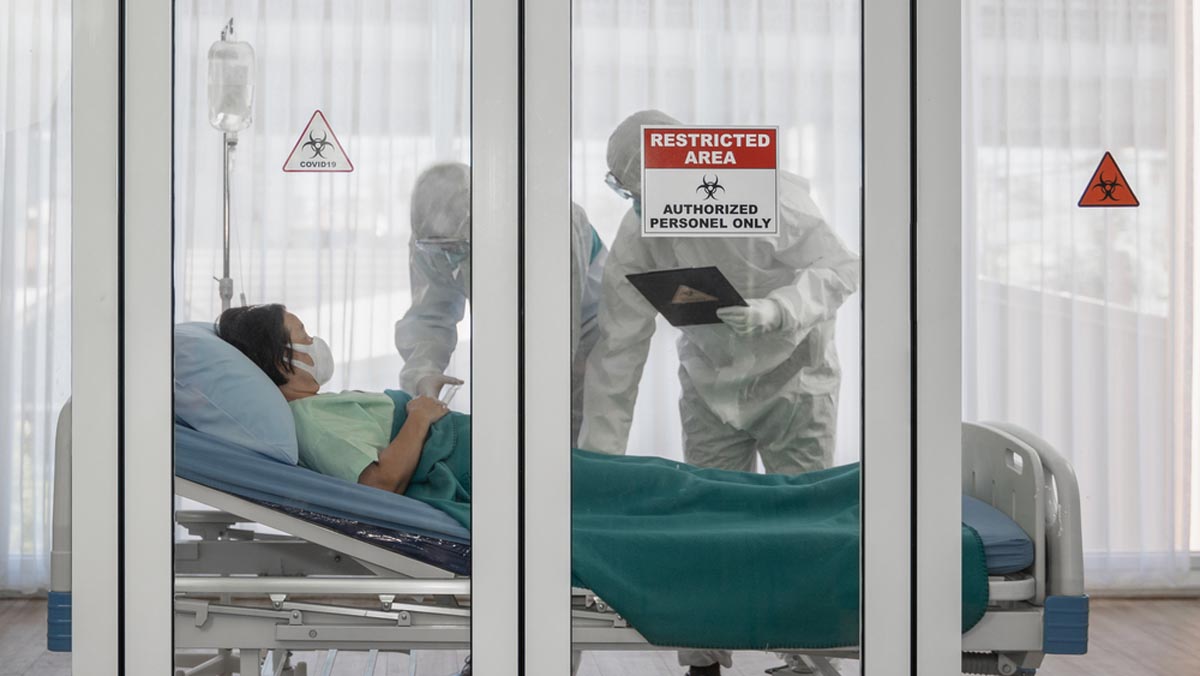
Ensuring the facilities’ standards is imperative to protect health workers and prevent further outbreak. ©Mongkolchon Akesin/Shutterstock
ASSISTING IN QUARANTINE FACILITIES OPERATIONS
In term of operational management, hospital-based quarantine facilities will have their own teams, but for the non-hospital facility, the government must ensure the highest standard by involving the cooperation of multiple agencies. Otherwise, the effort to minimise the spread will not be effective because COVID-19 is highly contagious and people may not always comply.
In Hong Kong, the government ensures the operational effectiveness by deploying staff to the non-hospital centres. Security and healthcare staff will be on duty at all times. Transfer services for leaving and entering the centres are provided to people under quarantine, who will not take part in any community activities. Entry into and departure from the quarantine centres are not allowed without written permission from the health personnel.
In Malaysia, the management of non-hospital facilities is done through intensive collaboration. The collection and disposal of clinical wastes at the centre are the responsibility of the district health office; whereas general waste is the responsibility of the local council. Food supply is dealt by the district welfare department and the food quality and safety aspects are coordinated by the district health officer. Water supply to the centres should be managed by the Malaysian Public Works Department. The centres will also be guarded by the General Operations Force, the People’s Volunteer Corps, or the Royal Malaysian Police, depending on local arrangements.
BREAKING THE CIRCUIT: LIMITING BUILDING SERVICES
To reduce the risk of further local transmission of COVID-19, many countries suspense all non-essential activities at workplace premises. In Singapore for example, a Multi-Ministry Task Force has ceased all construction works on 7 April 2020. However, Singapore’s Building and Construction Authority (BCA) exempts companies that provide essential services and their related supply chains. This is important because buildings such as hospitals and quarantine facilities are still in full operation.
Essential facility management services for buildings and infrastructure are needed both by the hospitals and the general public. Singaporean government defines these services to include air-conditioning and mechanical ventilation systems, fire protection systems, security and surveillance systems, electrical and plumbing works. That being said, contact among workers must be minimised by following the advice from the authorities. To ensure that the provision of essential building services is on point, BCA has set clearer parameters, such as deferring new installations. For example, all new lift and escalator installation works are required to cease from 7 April 2020 to 4 May 2020.
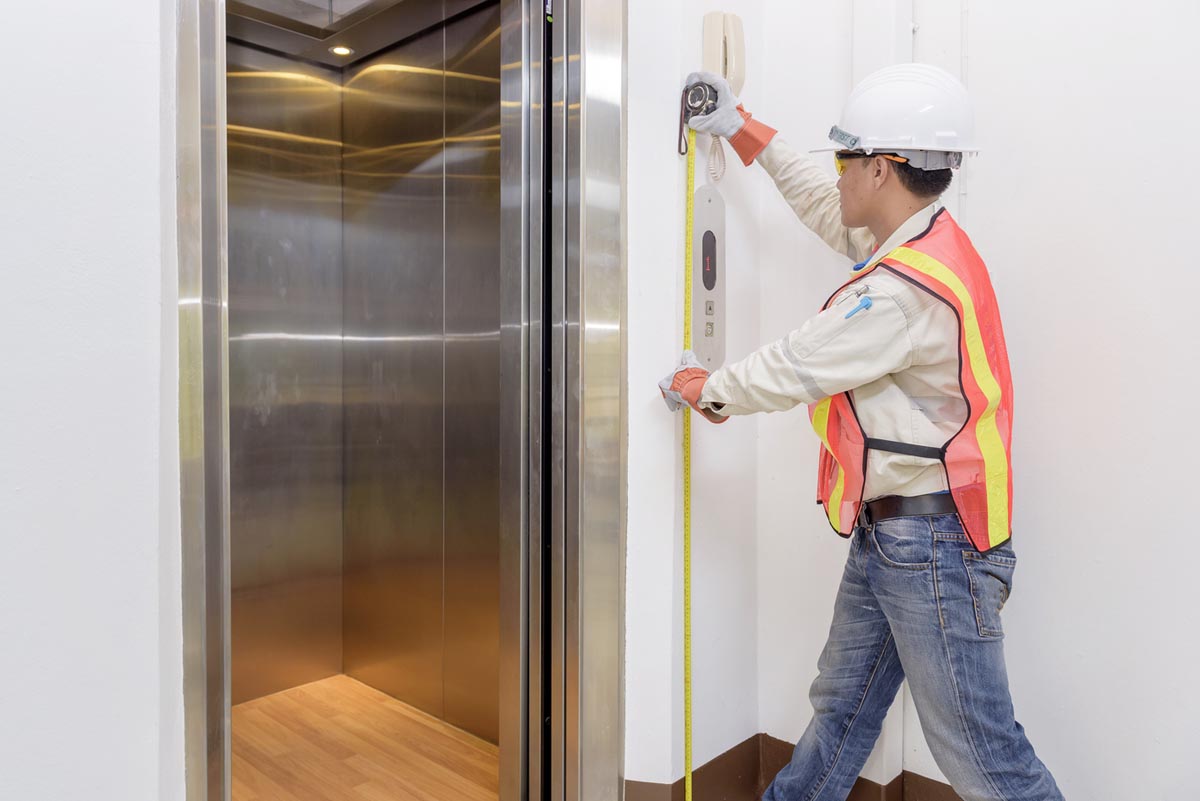
Essential services will continue to be carried out in Singapore to ensure functionality and safety. ©thanatphoto/Shutterstock
PROVIDING SPACES FOR WORKERS
Some buildings may become hot spots of the outbreak, such as those where foreign workers reside. In Singapore, for example, such hot spots are the S11 Dormitory @Punggol and Westlite Toh Guan dormitory. More cases are confirmed in these foreign worker dormitories. To control the transmissions, the Multi-Ministry Task Force has declared both dormitories as isolation areas.
On-site medical support has been deployed, along with the provision of food and essential supplies. Precautionary steps have also been taken to protect workers who are not affected. All the affected workers will not go to work. Access to recreational facilities will be regulated to reduce the intermingling of workers. Movement between blocks is prohibited. Workers have also been advised to cease social interactions with others who do not reside in the same room or floor.
On 11 April 2020, the Maritime and Port Authority of Singapore partnered with terminal operator PSA Singapore, Keppel Offshore & Marine, Bibby Maritime Limited and The Ascott Limited to provide two floating accommodations to temporarily house healthy foreign workers. The essential needs of the occupants, including the delivery of catered meals, will be taken care of. A medical facility, manned by nurses and doctors from Fullerton Health, will be set up nearby on land.
Meanwhile, the 14-day compulsory quarantine started early in Hong Kong on 8 February 2020. For non-Hong Kong residents who have arranged to stay at hotels or other residential spaces, they will undergo quarantine there. If Hong Kong residents under compulsory quarantine are not able to arrange accommodation for self-quarantine, they are accommodated at one of the government facilities (Hong Kong SAR Government).
In Singapore, the Ministry of Manpower (MOM) is helping Malaysian workers with temporary residential spaces. On 25 March 2020, Malaysia announced that its Movement Control Order will be extended to 14 April 2020. Given the current uncertainty over border controls between Johor and Singapore (with approximately 295,731 people crossing it every day before the pandemic), MOM has encouraged all affected employers to look for more sustainable housing options in Singapore for Malaysian workers. The ministry has also helped to facilitate accommodation for affected workers. In total, 2,000 firms have been assisted, with their requests for accommodation for over 10,000 affected workers. If necessary, the ministry will embark on the next phase, which is to work with employers to facilitate the transfer of their affected workers into more sustainable housing options in Singapore (Ministry of Manpower), such as hostels, dormitories and even budget hotels.
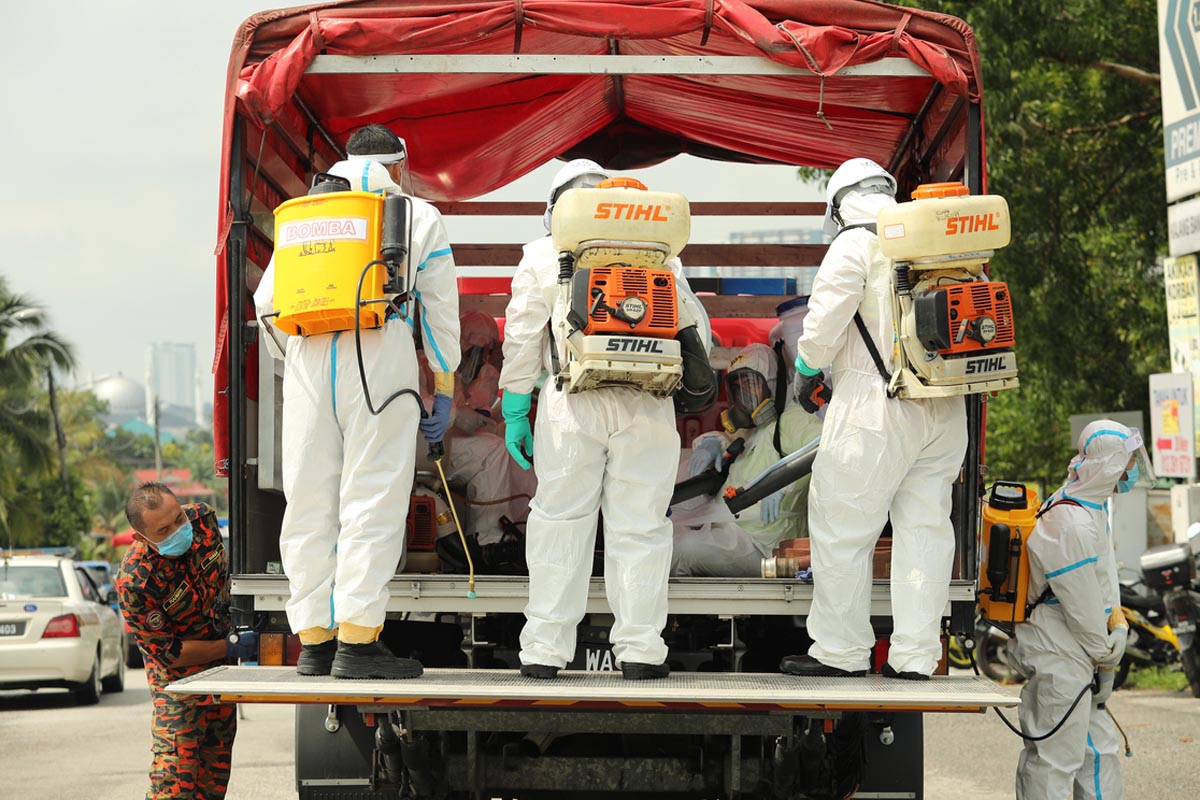
Health workers in Selangor, Malaysia, were getting ready to sanitise public facilities ©Tajjudin/Shutterstock
ASSISTING OWNERS OF NON-HEALTHCARE PREMISES
As the virus can survive on surfaces of different materials for at least two to three days, surfaces potentially contaminated with the novel coronavirus must be sanitised. Social distancing will surely flatten the curve, but this should be coupled with guidance for building operations. Environmental cleaning is also necessary because this will disinfect the areas where transmissions have occurred.
In Singapore, the Ministry of Health and the National Environment Agency are assisting owners or operators of non-healthcare premises to carry out environmental cleaning, for areas exposed to confirmed cases of COVID-19 in non-healthcare premises. This applies to premises where a confirmed case has resided or has been present for a substantial period of time.
This include cleaning support for hotels. This scheme supports third-party cost of professional cleaning services incurred by Singapore-licensed hotels that have provided accommodation to suspected and confirmed COVID-19 cases (Singapore Tourism Board).
ADVISING LANDLORDS AND PREMISES MANAGEMENT
The social impacts of COVID-19 outbreak can be as harmful as the infection itself. People may blame each other and this will trigger conflicts. Tenants might even be evicted when they are tested positive. Not only is this detrimental for the physical and psychological well-being of the tenants, but it is also dangerous for social cohesion.
Singapore is fast in identifying and mitigating such social impacts. The Public Communications Division, as published on Singapore Government Portal, issued advisory for dorm operators, landlords and the management of premises. They are not allowed to evict occupants under stay-at-home (SHN) notice from their residence. On the contrary, landlords are encouraged to provide supports. If an occupant under SHN is sharing a room with others, landlords should ensure that there is a wide separation between beds and that there are dedicated spaces for storage of belongings. Aside from routine cleaning, landlords should provide essentials for precautions, such as masks, gloves and disinfectant.
Another practical guideline can be adopted from the one issued by the Hong Kong Housing Authority, under the Occupational Safety and Health Council. In the Infection Control Guideline Safety and Health Alert No. 16/2020, people can learn how to do home disinfection. Surfaces at buildings and construction sites must be disinfected twice daily, with 70 per cent alcohol for metallic surfaces; and 1 in 99 diluted household bleach (10 millilitres of bleach containing 5.25 per cent sodium hypochlorite in 990 millilitres of water) for other surfaces.
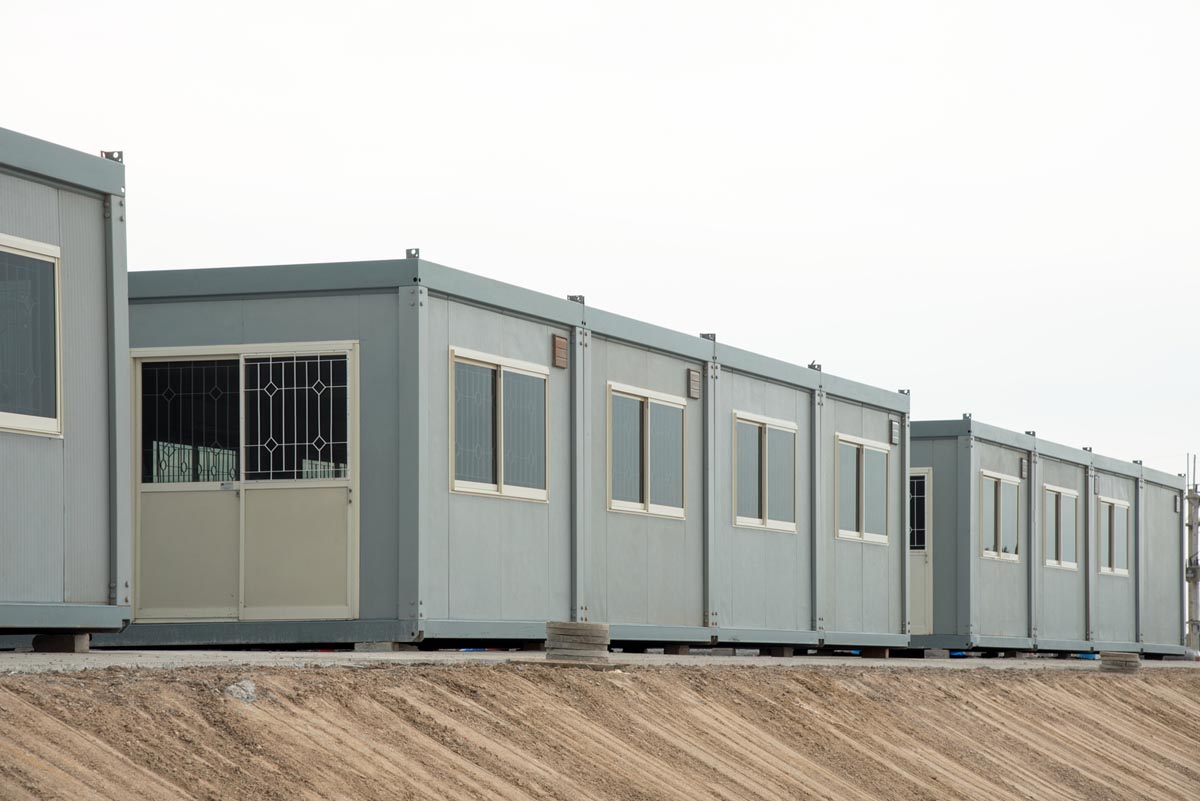
Construction innovation could transform containers into emergency facilities to treat COVID-19 cases. ©Bannafarsai_Stock/Shutterstock
CONCLUSION
Measures to minimise the spread and impact of the COVID-19 outbreak must be thorough. The necessity to build emergency facilities in a timely manner is undisputable. Modular technology is one way to achieve rapid construction of emergency facilities. Another is by converting shipping containers into plug-in Intensive-Care Unit Pods referred to as Connected Units for Respiratory Ailments (CURA).
However, treating confirmed cases and urging people to self-quarantine is not enough. These measures should be accompanied by implementing a good standard of quarantine facilities and hospitals; good operational management; and essential services for building maintenance. It is also necessary to contain confirmed cases within isolated areas; and environmental cleaning should also be carried out to prevent further spread.
As contagion may give rise to greater social issues, it is important to protect certain groups such as tenants from eviction, as much as it is important to help foreign workers with temporary spaces. The authorities should also have a dialogue with the citizens when they are going to convert a facility into a quarantine centre.
All these measures require fast response and a high level of collaboration and coordination. Ministries should come together and form joint-forces. A holistic approach and compliance from the general public and relevant stakeholders will help flatten the curve at a faster rate.
The original article is written by Anisa Pinatih and published in Construction+ Online
Disclaimer: Construction+ makes reasonable efforts to present accurate and reliable information on this website, but the information is not intended to provide specific advice about individual legal, business, or other matters, and it is not a substitute for readers’ independent research and evaluation of any issue. If specific legal or other expert advice is required or desired, the services of an appropriate, competent professional should be sought. Construction+ makes no representations of any kind and disclaims all expressed, implied, statutory or other warranties of any kind, including, without limitation, any warranties of accuracy and timeliness of the measures and regulations; and the completeness of the projects mentioned in the articles. All measures, regulations and projects are accurate as of the date of publication; for further information, please refer to the sources cited.









 Indonesia
Indonesia
 Australia
Australia
 New Zealand
New Zealand
 Philippines
Philippines
 Hongkong
Hongkong
 Malaysia
Malaysia



